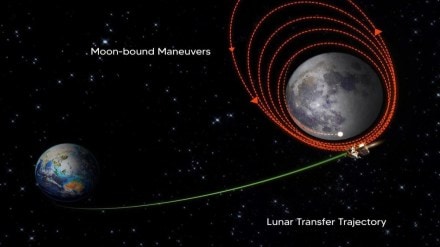India’s Chandrayaan-3 moon mission achieved a significant milestone as it successfully entered lunar orbit almost a month after its launch, according to ISRO. The crucial manoeuvre was executed from ISRO’s facility in Bengaluru. The spacecraft’s closest point to the moon, known as Perilune, experienced a retro-burning operation commanded from the Mission Operations Complex (MOX) at ISTRAC.
What’s next for Chandrayaan?
As the spacecraft approaches the moon, it will need to be captured by its gravity. Following this, a series of manoeuvres will reduce the orbit to a circular one with dimensions of 100×100 km. Subsequently, the lander carrying the rover will detach from the propulsion module and commence its powered descent towards the moon’s surface.
Chandrayaan-3’s lander, Vikram, and rover, Pragyaan, are slated to land on the Moon on August 23. The landing site for this mission is relatively close to that of Chandrayaan-2, situated near the south pole of the moon at 70 degrees latitude. If all goes as planned, Chandrayaan-3 will become the world’s first mission to softly land near the lunar south pole.
The lander and rover have a mission life of one Lunar day, equivalent to 14 Earth days, as the moon takes around 28 Earth days to complete one rotation on its axis and one revolution around the Earth. To avoid the extreme drop in temperatures during lunar nights, which would be detrimental to their survival, the lander and rover will be deployed at dawn.
‘I’m feeling lunar gravity’
ISRO also shared a message from the satellite to its centres stating, “MOX, ISTRAC, this is Chandrayaan-3. I am feeling lunar gravity.”
(With agency inputs)
